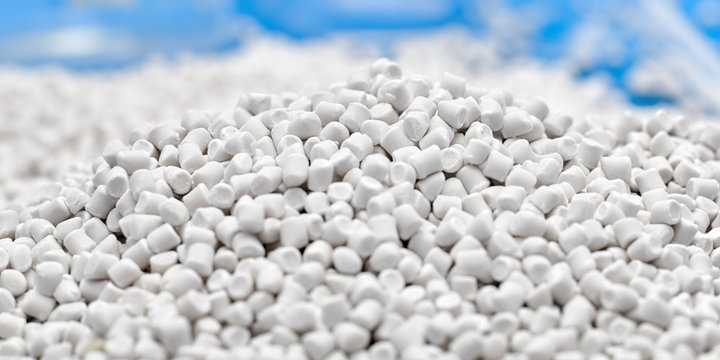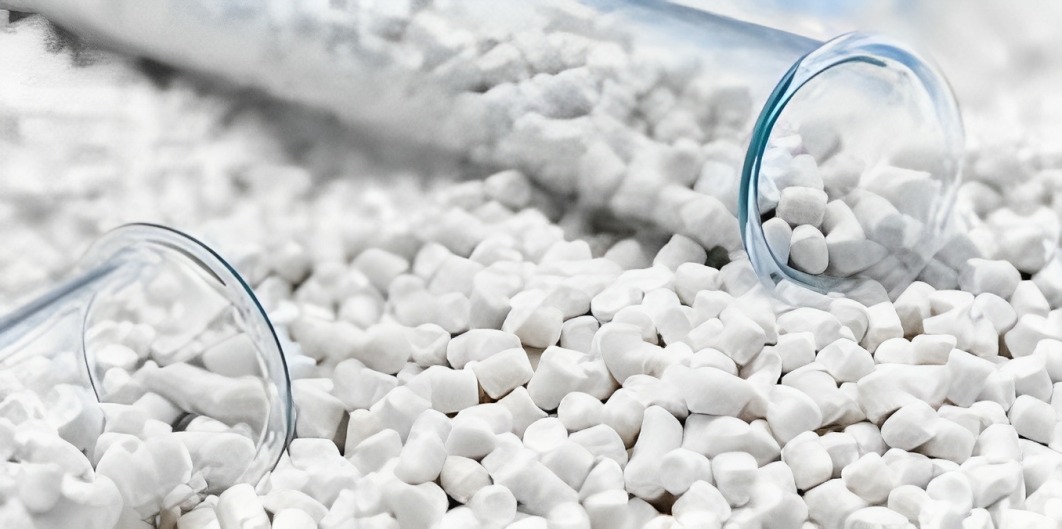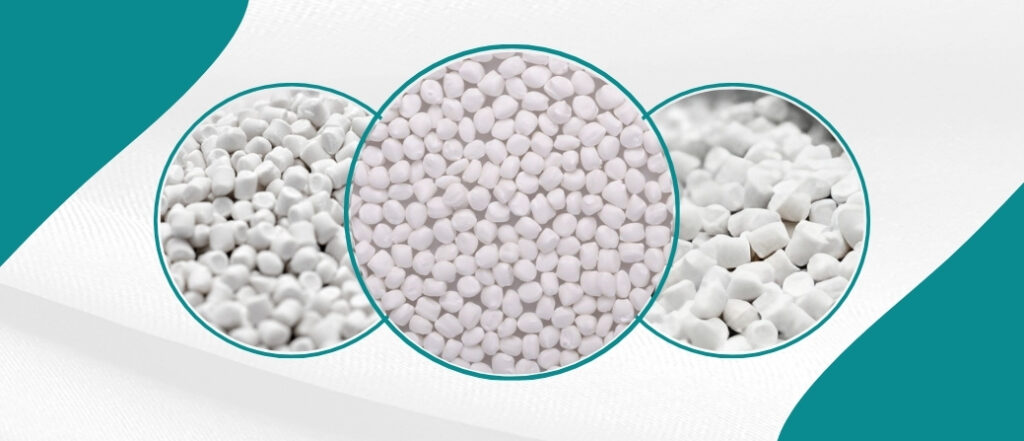Table of Contents
Introduction
White masterbatch is a crucial element used in plastics manufacturing to impart a bright, consistent white colour to end plastic products. In fact, it is a vital segment that plays a pivotal role in the growth of the global Masterbatch market with a CAGR of almost 5%.
In this article, we take a deeper look into the making of this unique Masterbatch, shedding light on the components that create such a strong element.
The Composition of White Masterbatch
White Masterbatch is mainly composed of TiO₂, a base polymer, and extra coatings and treatments as follows:
1- Titanium Dioxide (TiO₂)
The primary pigment responsible for creating the white colour of the Masterbatch, by scattering and reflecting light in all directions, making it crucial for enhancing opacity. The more TiO₂ particles, the greater the opacity, as it is characterised by its high refractive index. TiO₂ also absorbs UV radiation, preventing it from reaching the polymer matrix.
Rutile is one of the most common crystal forms of TiO₂ due to its superior opacity. It is important to apply control over particle sizes as smaller particles create a bluer tint, while larger particles create a yellow tint. Extra coatings and treatments can be applied to improve the properties of the TiO₂ such as durability, dispersion, and moisture absorption.
2- Carrier Resin
Carrier Resin is the base polymer carrying TiO₂ pigments, most commonly Polyethylene (PE) and Polypropylene (PP). It acts as a vehicle to evenly distribute the active ingredients throughout the plastic material. Carrier Resin is added to the base polymer during the manufacturing of plastic products, playing a crucial role in unifying the dispersion during the process. It is very important to use high-quality Carrier Resin to maintain the properties of the products.
3- Functional Additives and Properties Enhancers
Additives can vary depending on the main desired properties and applications. For example, if the final product is often exposed to light, it is crucial to use UV stabilisers to improve lightfastness and to prevent the plastic product from UV degradation.

The Making Of White Masterbatch
Manufacturing White Masterbatch goes through a specific yet careful process that includes multiple steps after designing the aspired formula:
1- Material Selection:
One of the most important aspects of the making of White Masterbatch relies on choosing the right raw materials, pigments, and additives.
It is crucial to pick high-grade TiO₂ pigments, commonly Rutile, in the right particle sizes. It is also important to choose high-quality Carrier Resin, whether it is PP, PE, PVC, or other, to ensure that the properties are well maintained during the process. Additives are also picked depending on the desired properties needed, such as lightfastness, durability, heat resistance, and more.
2- Preparation of Pigment Dispersion
TiO₂ pigments are dispersed into the carrier resin using specialised equipment like the twin-screw extruder, applying high shear forces to break down pigment agglomerates. Dispersants, stabilisers, and agents can be added to enhance the process, such as re-agglomeration prevention and reduction of the interparticle attraction forces.
This step is crucial to achieve a uniform dispersion of pigments and to ensure that particles are evenly distributed to provide consistent whiteness.
3- Extrusion
The process primarily aims to mix the Carrier Resin with the pigment dispersion, achieving a thorough blending and homogenization. It goes through multiple steps: starting from feeding, the pigment dispersion and carrier resin are added into the Extruder machine, where the mixture is heated to a molten state. The rotating screws generate shear forces, breaking down pigment agglomerates until achieving uniform distribution of pigment within the resin.
4- Pelletization
After the extrusion, the mixture is cooled down, and the pelletization begins to shape the extruded material into spherical pellets. Different equipment can be used for cutting, such as the Spheronizers and Marumerizers. Pellets are cut to a specific size upon request.
5- Procedure Additional Requirements
It is necessary to apply quality control over the process, including the measuring of consistency, size distribution, and melt flow properties.
It is crucial to make sure that the process complies with standards.
It is also important to take good care of the packaging and storing in moisture-resistant bags in a controlled environment.

Final Thoughts
From food packaging, and household and medical appliances, to automotive, White Masterbatch is there to serve its needs, making the accurate procedure of its making quite a worthy one.
Carbokene has developed Carbobatch White Masterbatch with several grades, designed to provide high whiteness, brightness, and opacity to the final product. We use progressive manufacturing techniques that include the use of very high-quality pigments and additives from worldwide expert manufacturers, which result in turn in clientele
quality products. Interested in having the best quality White Masterbatch?
Contact Us Now!



